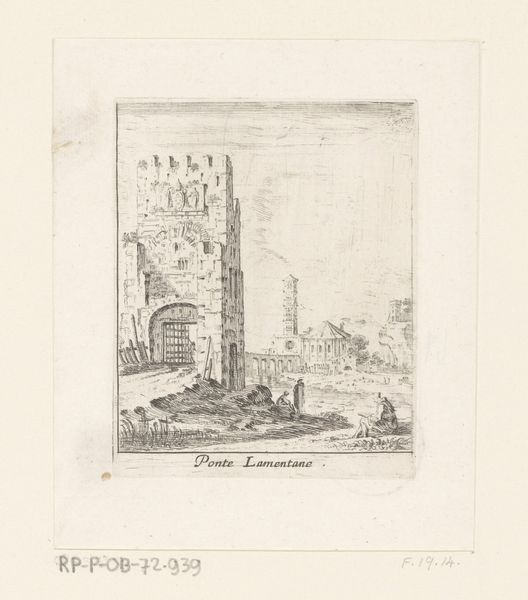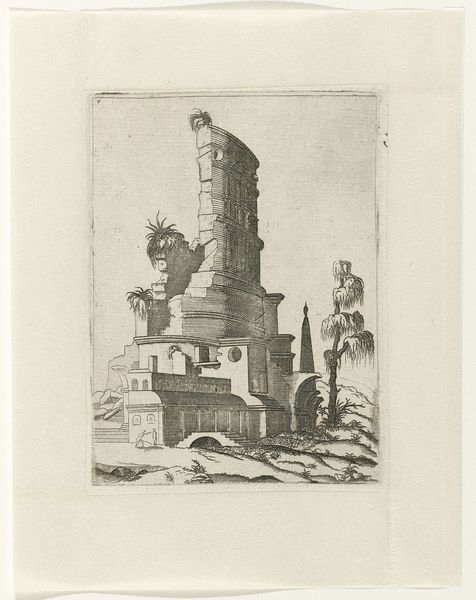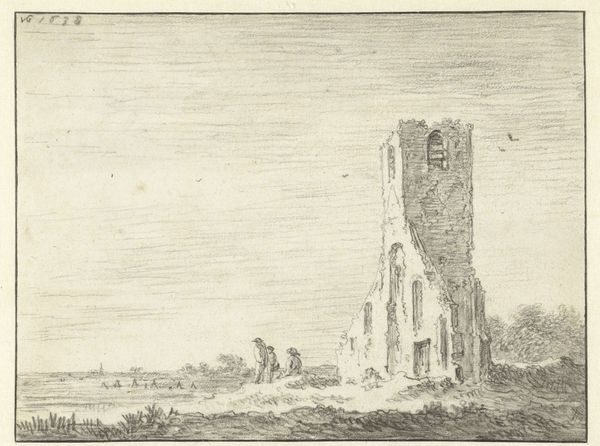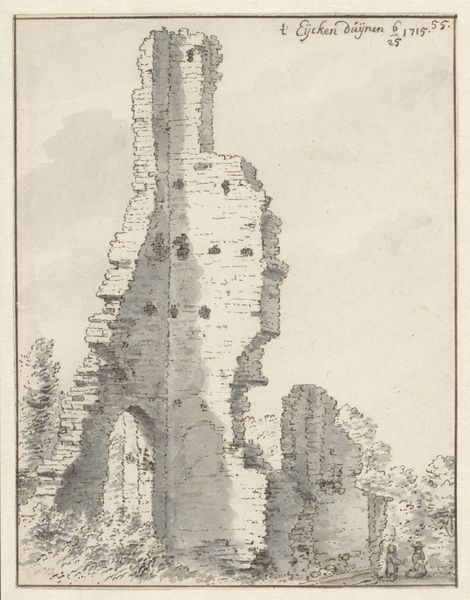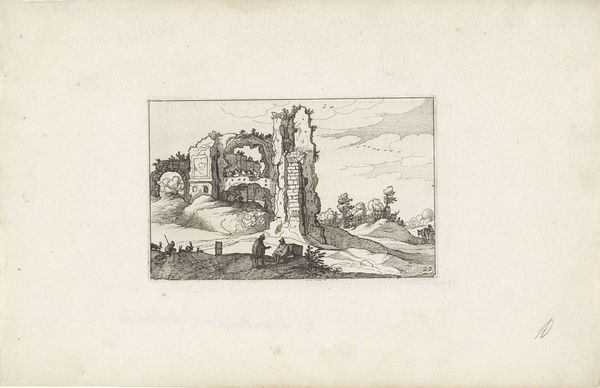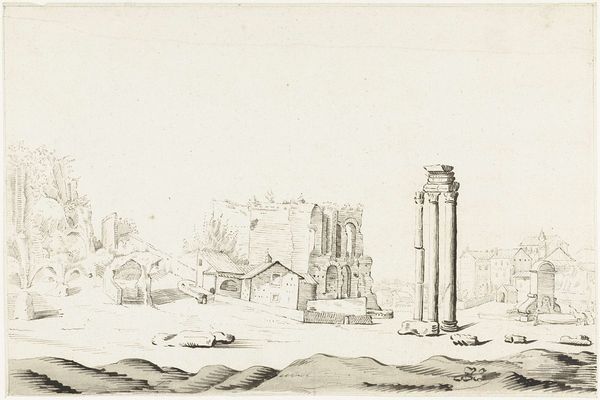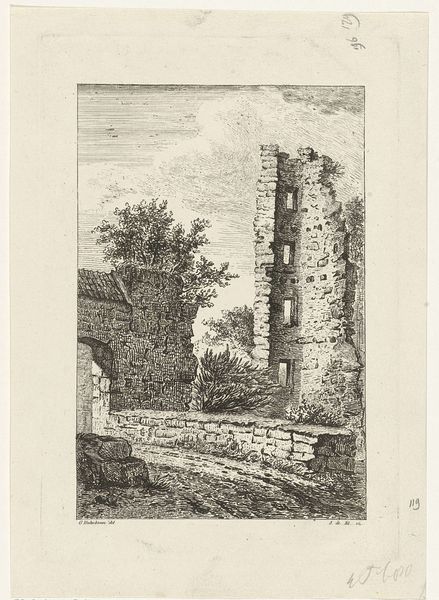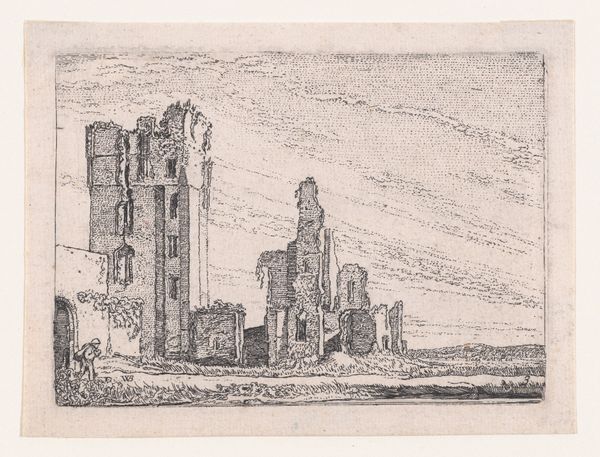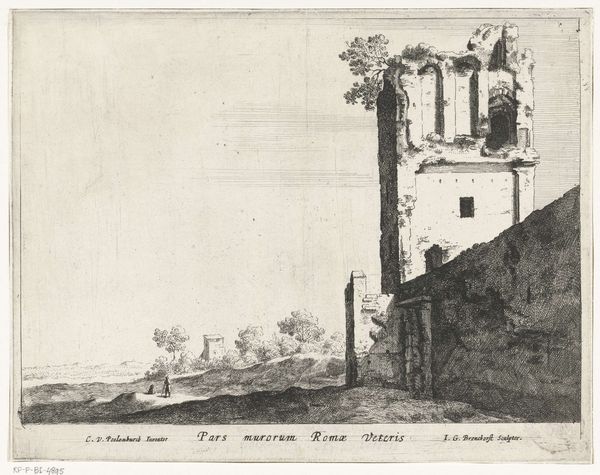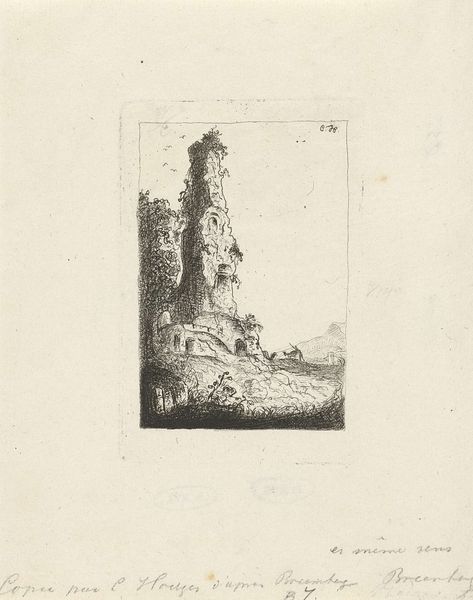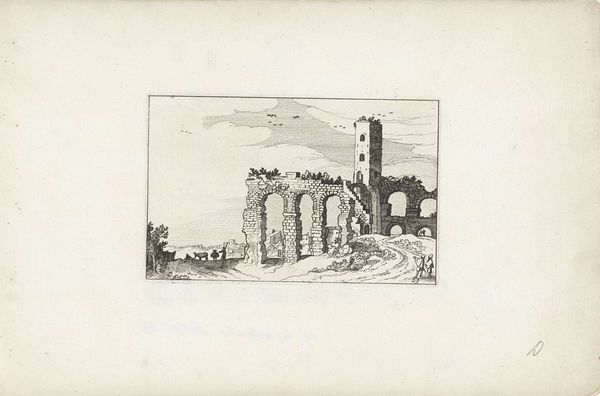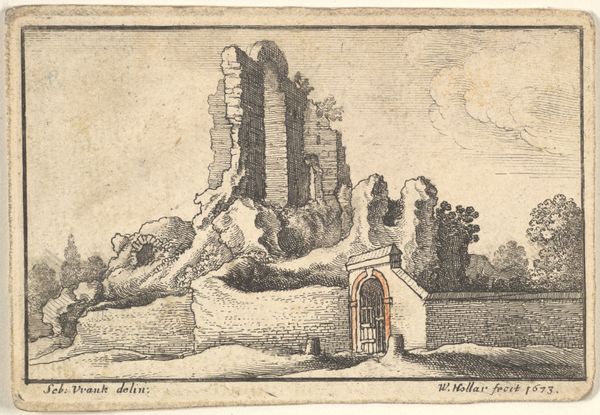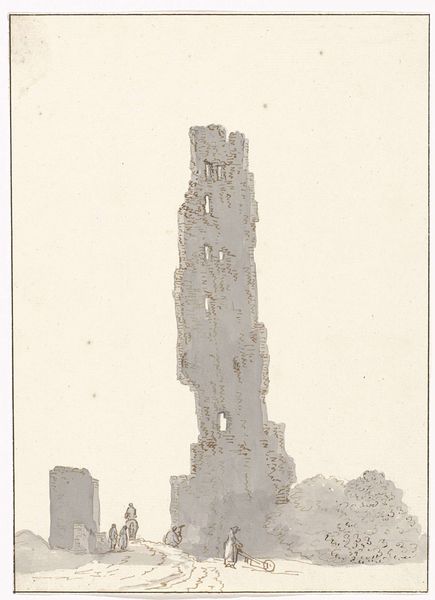
print, etching, engraving, architecture
# print
#
etching
#
etching
#
romanesque
#
ancient-mediterranean
#
line
#
cityscape
#
history-painting
#
engraving
#
architecture
Dimensions: height 261 mm, width 198 mm
Copyright: Rijks Museum: Open Domain
Editor: Here we have Jean Beuf's "Romeinse triomfboog in Orange, 1639," created sometime between 1637 and 1640. It's a print, made with etching and engraving. I’m struck by how the artist uses such simple lines to convey the monument’s grandeur, despite its ruinous state. What compositional elements stand out to you in this work? Curator: Notice how the line work defines the texture of the stone, the careful articulation of each brick. The artist has rendered the "Face occidentale" of the arch through a network of intersecting lines, thus creating tonal variations and a sense of three-dimensionality within a two-dimensional medium. Editor: So, it’s the structure of the lines themselves, rather than the depiction, that is most crucial? Curator: Precisely. It’s also how these lines come together in the totality of the composition. Note the division of the space, the horizontal emphasis creating stability against the verticality, aspiring, defying the decaying monument, reaching out to the edges of the artwork itself. How does the inscription at the top contribute? Editor: It seems to function as an orientation point, almost a title card within the piece, but also adds another horizontal layer in contrast with the vertical rise of the arch. Is that balance something the artist consciously strived for? Curator: The work is concerned with the inherent properties of form and medium. Whether it sought an idea such as balance, the arrangement achieves formal tensions—the ruined base against the intact upper structure, light against dark. It calls attention to its structural components rather than mimetic accuracy. Editor: That's interesting, I was thinking it was more about representing a historical site. Now I see how it really pushes us to consider the artistic choices in its creation. Curator: Indeed, a structural analysis allows us to grasp the artwork's underlying organization, detaching itself from time and history.
Comments
No comments
Be the first to comment and join the conversation on the ultimate creative platform.
